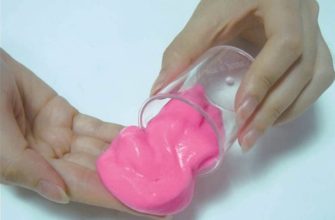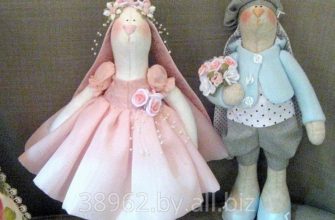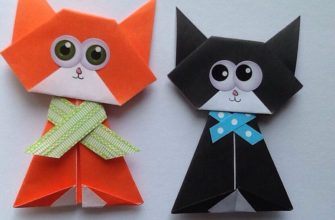A doll is not a toy for a child. This is exactly what many collectors think, who are fond of a variety of products in this category, including handmade ones. The doll really has a much wider application than simple games, for example, it can be used to decorate the interior. It is worth learning more about how to make a doll yourself.
- What types of handmade dolls are there?
- What materials are used in the work?
- Textile interior dolls: ideas for work
- Features of interior dolls
- How to choose the right fabric for making a toy
- Master class on creating a textile doll with a detailed description
- Rules for face and hair design
- Making an outfit for an interior doll
What types of handmade dolls are there?
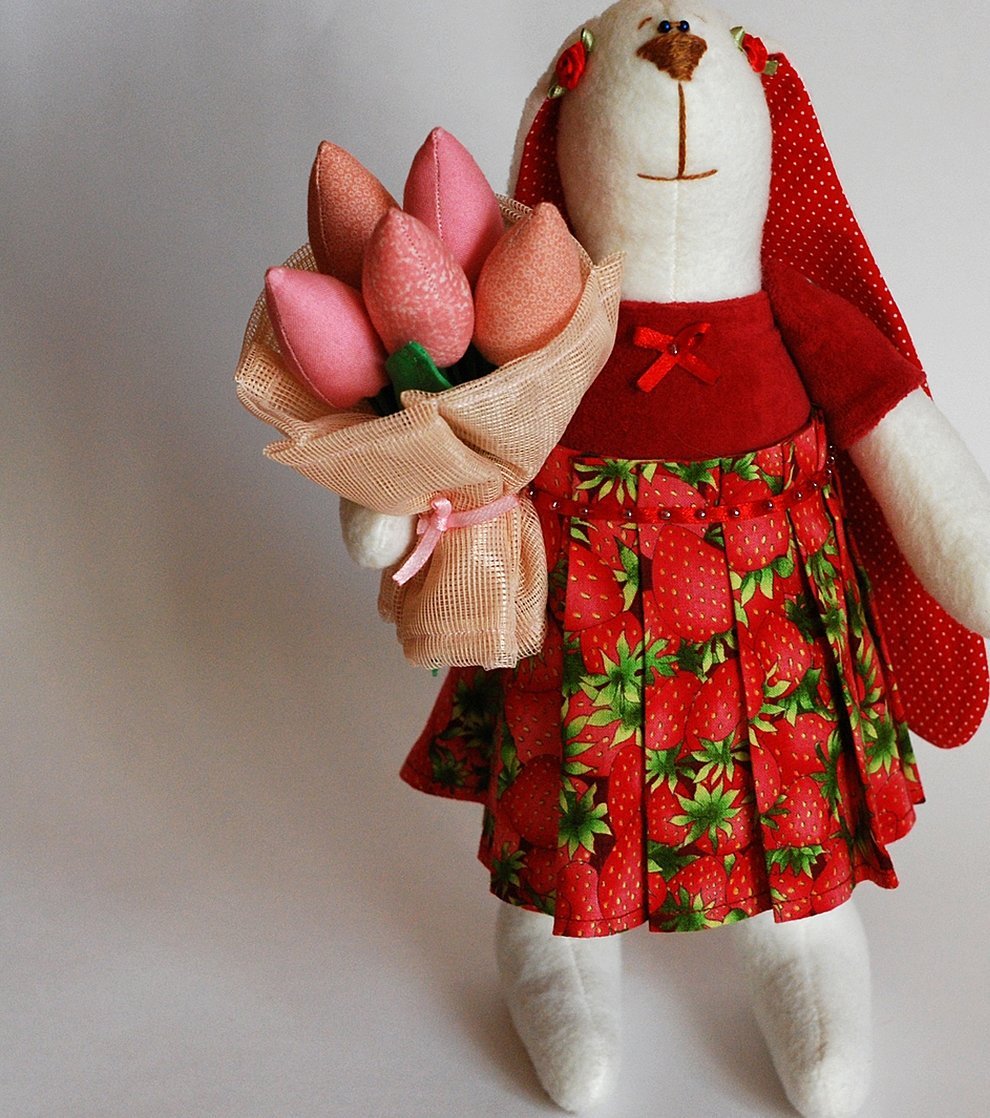
It is generally accepted in society that dolls are exclusively for children. Of course, the play category is the most extensive, but not the only one. So, handmade dolls are also (depending on the method of use):
- Ritual or ceremonial. They act as a talisman or amulet (Zernushka). Various religious rituals are performed with their help. They serve to pass on to descendants the memory of ancestors, their customs and traditions. The production and use of a ritual doll is taken extremely seriously. Some of their types are even considered dangerous, for example, a Voodoo doll.
- Utilitarian. They have a specific practical purpose, for example, a doll can have a shape typical of a toy, but be a teapot, sugar bowl, handbag.
- Interior. A large category. Hand-made items related to it are souvenir, display, and national dolls.
- A separate category is theatrical toys (finger puppets), used for performances for children.
None of the existing classifications have strict boundaries. Souvenir and display models are suitable for games, and simple dolls from the "Children's World" can be placed under glass, becoming part of a collection. Some designer toys, made in a single copy, can also be used for purposes other than their stated purpose.
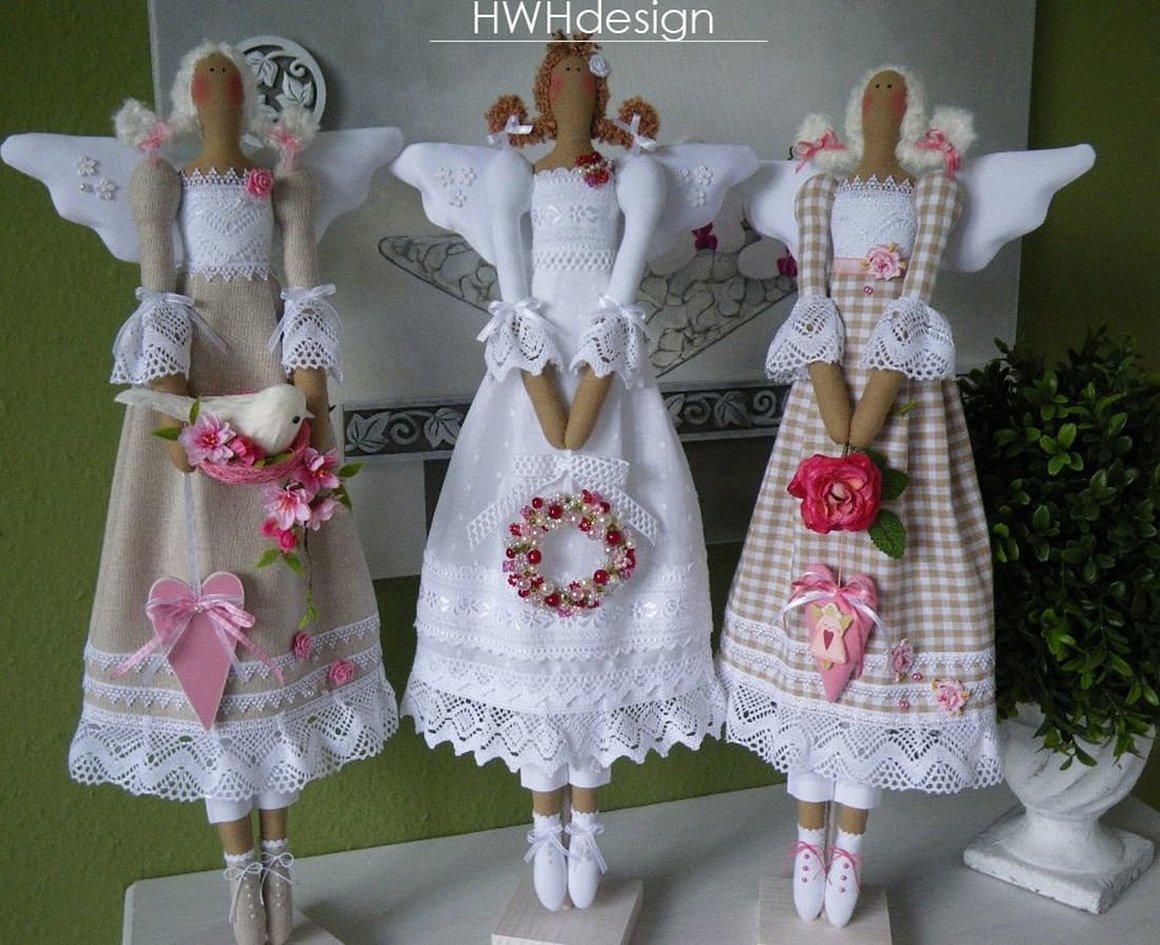
What materials are used in the work?
To create a doll with your own hands you will need:
- Textiles. The most diverse fabrics are used. The type depends on the purpose. So, if you need to make a body for a toy, you should take thick flesh-colored knitwear or one-sided fleece on a knitted base (polartek). Doll clothes are sewn from absolutely any fabrics - silk, linen, cotton, synthetics. There is special doll ECO-knitwear, it does not wrinkle, creases do not appear on the fabric. Waldorf textile dolls are sewn from it.
- Lace for decoration.
- Beads, beads, glitter.
- Clay and paints.
- Yarn, if the doll is knitted. Such products are most often made using the amigurumi technique. The maximum size of the toy is 8 cm. The head is disproportionately large, the face is kind. The amigurumi body is knitted with a single fiber in a circle.
- Threads for embroidery.
- Nylon tights.
- Papier-mâché.
- Knitting needles.
- Hair for dolls.
- Threads of different colors, as well as sewing tools - needles of different thicknesses, scissors, paper for creating a drawing.
- Filling for doll body. Sintepon, sintepuh, foam rubber and other materials.
Important! Cotton fabrics shrink and fade after washing, so sewing clothes from them for dolls that children will play with is not the best option.
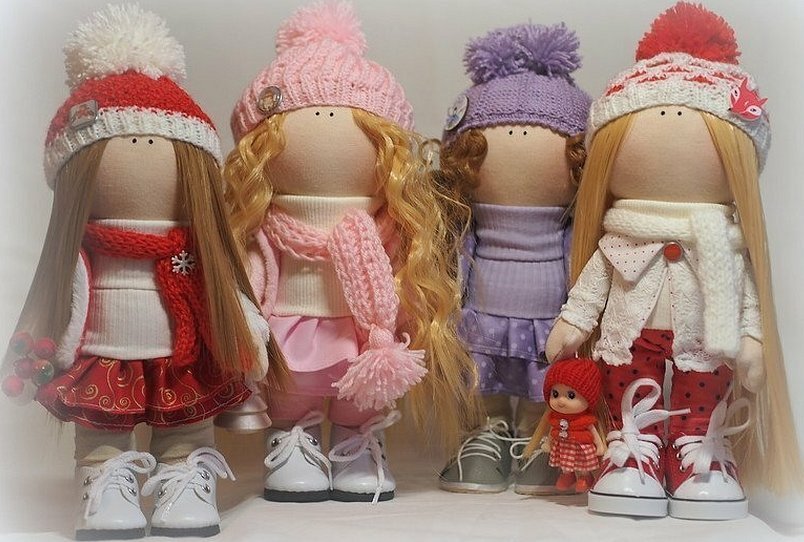
Textile interior dolls: ideas for work
Using various fabric scraps and special textile materials, the following can be sewn:
- Attic dolls. This doll does not have a sketch, as well as strict step-by-step instructions for making. Each craftswoman comes up with her own toys. The first of them were made by Americans. Foreign craftsmen used fabric with elements of the national flag, coat of arms, symbols emphasizing belonging to a particular nationality as decoration. An attic product, even made from new fabrics, is specially aged. To give the fabric a touch of antiquity, it is soaked in a mixture of coffee, water and glue, and then heated in the oven. The vintage style is extremely popular.
- Bolshenozhki or Snezka (Two-Eyes, Snegurochka). Such products are distinguished by the fact that although they do not have a solid frame (body), they are able to stand upright. The pattern is standard, the main condition is attention to design, details. Bolshenozhki's head is small, the eyes are two embroidered beads, there may be no mouth. The author of the first pattern for Snezka is a designer from Russia Tatyana Konne.
- Tildas. An interesting idea of sewing funny Tildas came to the mind of Norwegian designer Tony Finnanger. A distinctive feature of this type of doll is the presence of long legs and rosy cheeks. Strict rules are followed when sewing. Any deviations are considered a defect, the toy ceases to be a real Tilda and becomes an ordinary doll. When sewing, the proportions of the human body are not observed. The doll's body is pear-shaped, the legs are disproportionately elongated, and the head and arms are unnaturally thinned and elongated.
- Sheep, rats and mice, cats. Such toys are not classified separately. But they are considered quite fashionable. The collection of images and patterns for Tildas or Snowflakes necessarily includes several beautiful patterns for creating sheep, which these dolls hold in their hands.
Please note! Tilda dolls can have the head of any animal. It is not difficult at all to sew a Tilda sheep or any other.
To create a textile doll with your own hands from fabric, you do not necessarily need to know how to sew. Its body can be made from tightly rolled and tied with ribbons fabric, and clothes - from scraps or old grandmother's scarves, tied in the appropriate way. And there are also Korean Barbies, primitive dolls, hugs, soldiers, pumpkin heads, dolls based on Susan Woolcott, up to 30 cm high.
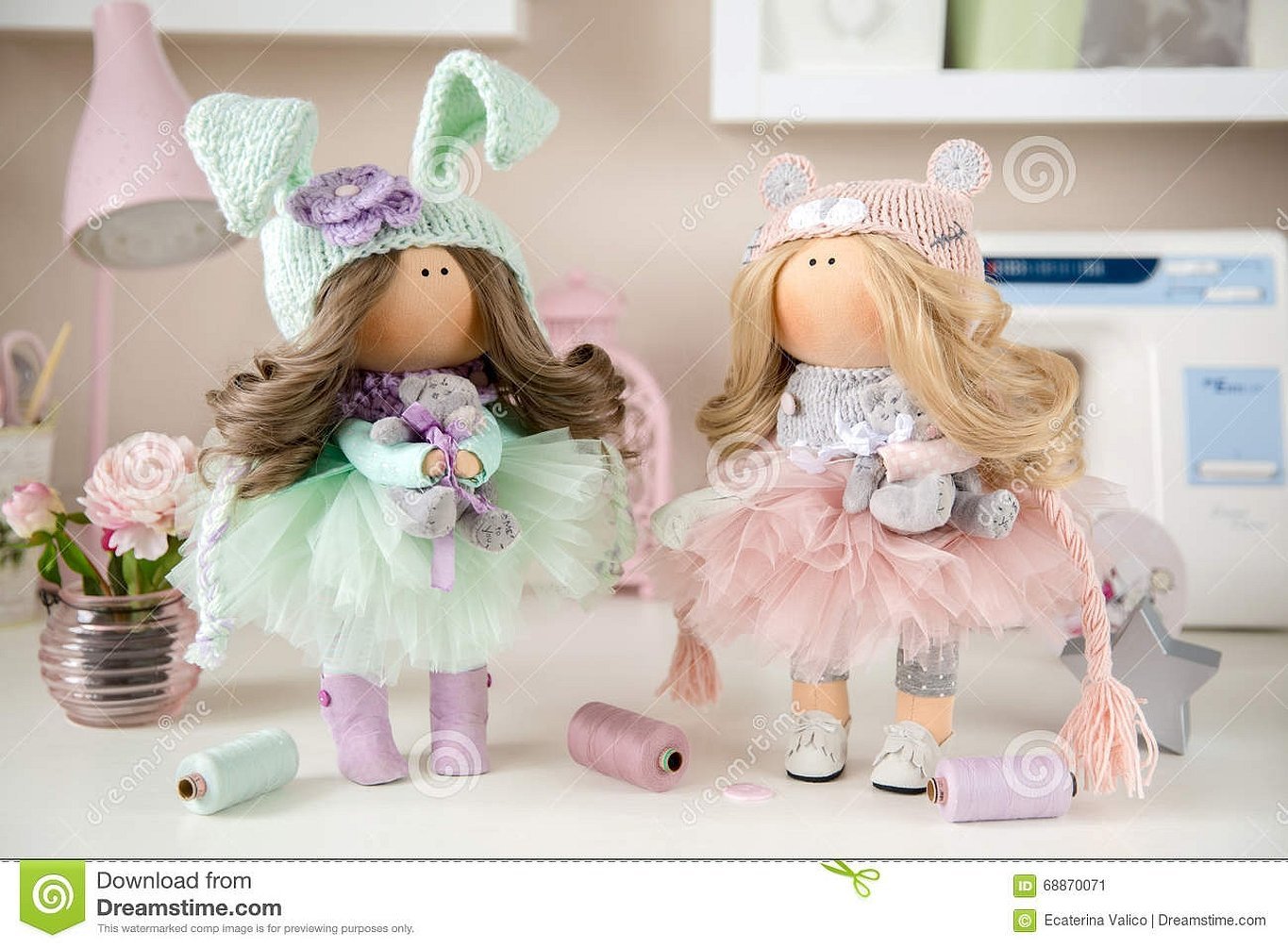
Features of interior dolls
A handmade interior doll, if played with constantly, quickly gets dirty, so it is not intended for games. A fabric girl is made according to a pattern that brings her appearance as close as possible to the appearance of a person, but can also appear in the form of a fairy-tale character, not always presented in human form (a fox dressed in a dress, a hedgehog in pants, a Teddy bear in a sarafan).
The rag product can also be presented in the form of:
- a teenager or a newborn baby;
- Christmas angel;
- symbol of the year.
Please note! Craftswomen who have made a collectible original toy in a single copy have the right to give it any name and even “stake out” a pattern, which actually led to the emergence of such a term as “designer toy”.
How to choose the right fabric for making a toy
A rag toy should be sewn from quality fabric. A beginner who has no experience in cutting and is just trying to learn something will have fewer difficulties if he chooses for his first doll:
- Cotton. Cotton fabric contains synthetic fibers, which allow the fabric to stretch and make the material almost wrinkle-free.
- Stretch gabardine. The combined composition of the fabric allows you to avoid problems with stretched and crumbling cuts.
- Nylon. Nylon is used to make the doll's arms, legs and face. It perfectly masks the flaws of the base, allowing you to change the shape of the toy's body, for example, to make the doll's cheeks in a few strokes. Its color is as close as possible to the shade of human skin.
Knitted fabrics are not used to create the base of fabric dolls and sew small parts - bags, buttons, socks. The cuts crumble, even careful processing does not save from the appearance of arrows in the place where the seam passes.
To obtain the required flesh tone, white fabric can be dyed using a coffee solution or regular tea. Tea or coffee brewed in a cup should be strained through a fine sieve (there should be no lumps or undissolved grains, this causes dots and stripes to appear on the material). The fabric should be kept in the liquid for 1-2 minutes, squeezed out and immediately dried with an iron or hair dryer. The faster this is done, the lower the risk of stains.

Master class on creating a textile doll with a detailed description
You need to start getting acquainted with the world of handmade dolls by creating the simplest pattern and mastering the art of sewing on a sewing machine. It is better to look at several MK. The finished product, made entirely by hand, rarely turns out neat, you will have to think about where and how to hide the flaws. The doll is sewn in several stages:
- Pattern. The drawing can be found on the Internet or in a magazine, copied onto paper or fabric while maintaining the proportions, or printed out. The pattern should be cut out, applied to the paper and traced along the contour with chalk. It is necessary to leave allowances for the seams, after which the pattern can be cut out of the material.
- Sewing. The cut out parts must be connected together and sewn along the back side, not forgetting to leave an opening on one edge - through it the doll's body is filled with stuffing. The sewn parts must first be turned to the front side and ironed.
- Stuffing. Pieces of fabric, cotton wool, padding polyester, any soft stuffing material are used to give the details shape. Stuffing the doll's body with fabric is done in stages. You need to start with stuffing and attaching the head to the body, finish with stuffing the arms and legs and then attaching them to the body.
Please note! If it is difficult to turn the doll's legs and arms yourself, you can use a simple pencil, pushing it through the fabric or tamping the padding polyester to give it the desired shape.
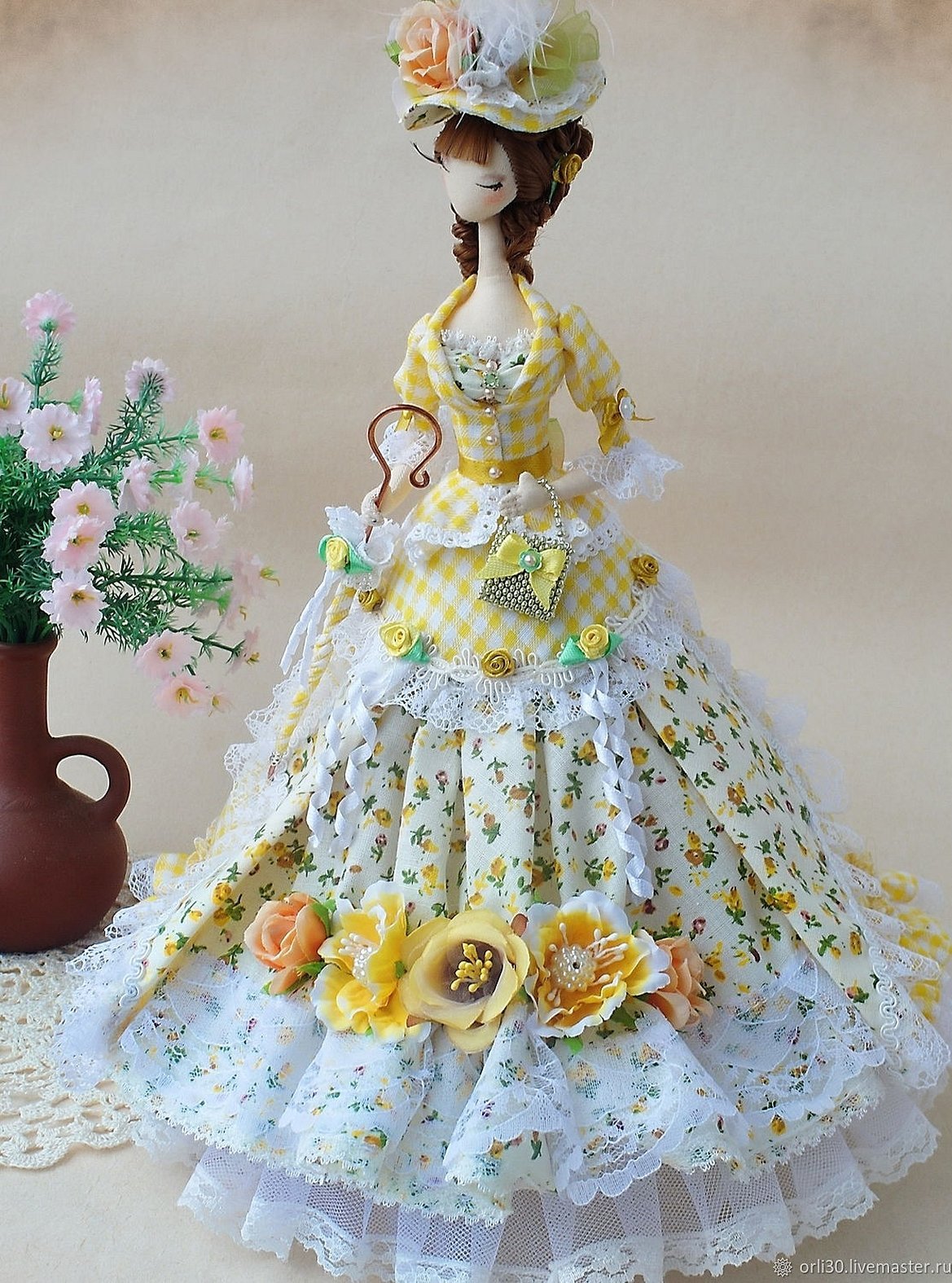
Rules for face and hair design
An unusual face can be embroidered or drawn. In the first case, you can use regular threads, and in the second - acrylic paints. They are:
- dry almost instantly;
- do not absorb into the fabric;
- can be of any shade, it is not difficult to choose the right one;
- resistant to moisture (the product can be washed).
The face can also be made from ready-made store blanks. In stores selling textiles and decorative fittings, glass eyes, nose, mouth for dolls are bought, which are attached to the product using hot glue. If nylon was used to make the toy, then cheeks, wrinkles, nose and eye sockets can be made by pulling the face together in certain places using a thread and a needle. Hair is made from:
- knitting threads (mohair yarn);
- regular threads for embroidery or sewing;
- frayed satin ribbons;
- nylon;
- sarana;
- acetate;
- goat wool;
- polypropylene;
- kanekalon.
The material for the hair is selected in accordance with the practical purpose of the product. Thus, the hair of an interior doll, which is supposed to be used only as a home decoration, can be made of goat wool or mohair. If you plan to comb the toy (your daughter is a future hairdresser), you should pay attention to more durable and long-lasting materials (threads get tangled and roll up).
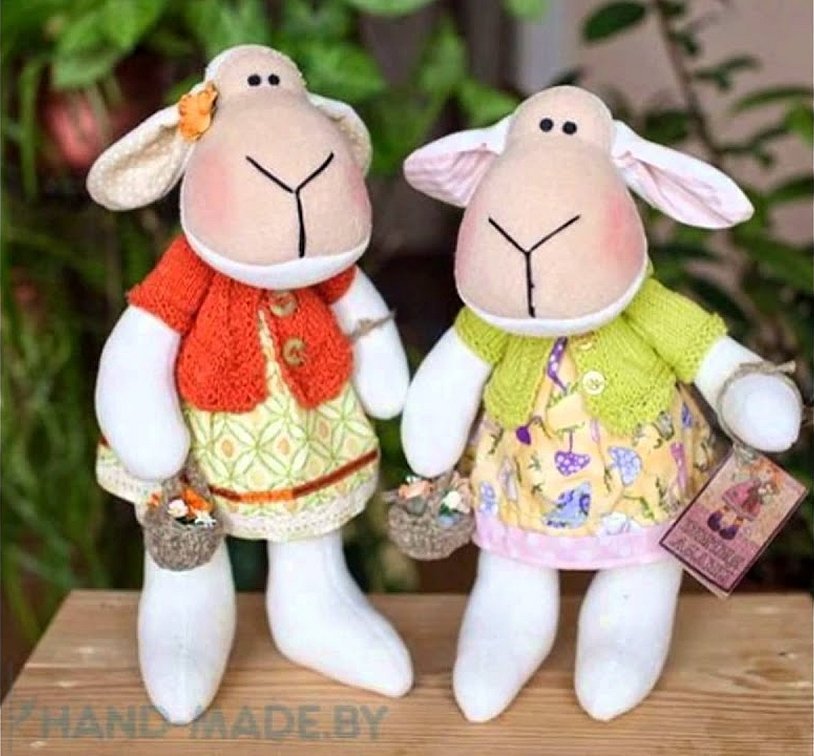
The method of attaching the hair depends on the material the head and the hair itself are made of. Individual strands are sewn or glued. It is not necessary to attach to the head; you can make a wig for the doll.
Making an outfit for an interior doll
What a homemade doll is dressed in is no less important than how it is sewn and looks. The outfit should be chosen based on the type of product, its practical use and the interior it is intended to decorate:
- A dress for a cute home Tilda is sewn from simple, often single-color and light fabrics. It is decorated with buttons or large beads. Shoes can be sewn to the feet or embroidered directly on the fabric used to create the doll.
- Snowballs always wear boots, shoes or ankle boots. Their clothes are made from expensive fabrics. Usually dresses are sewn, but sometimes it can be a suit consisting of pants and several layers of sweaters. The doll's neck should be wrapped with a scarf, and a cap or hat should be attached to the head. Bigfoot's clothes are abundantly decorated with lace, embroidery or crocheted braid. Hats are made from yarn and silk. Sometimes Snowball dresses the same as the daughter or granddaughter of the craftsman who made her. Boy's clothes also suit her.
- Susan Woolcott dolls are always dressed as simply as possible, with dresses in both bright and muted pastel shades allowed. A distinctive feature of the outfit is the presence of striped socks or golf.
- Korean Barbies (ragpiens) are dressed in lush dresses, complemented by hats, fans, and baskets.
- The clothes of attic toys should be specially aged.
When choosing fabric for a dress for a craft, you need to consider the future location of the toy. So, if the room where it will be displayed is covered with light pink wallpaper, there is a white carpet on the floor, and the curtains are made of airy fabrics of light shades, then even a very well-made doll dressed in a black, blue or brown dress made from scrap materials will look out of place.
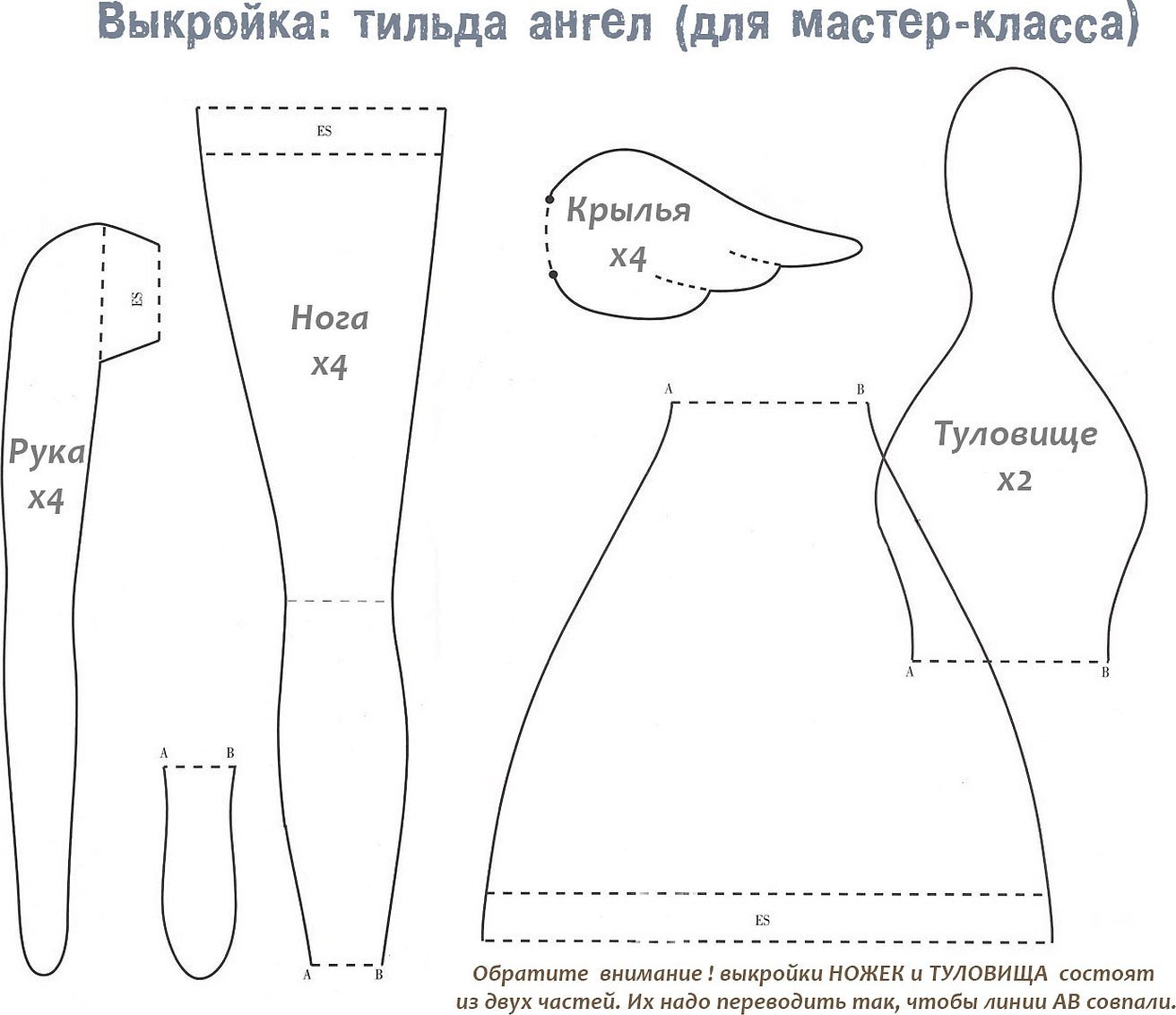
Working on a doll is always a long but fascinating process. It is no less fascinating to study the types and directions associated with the creation of toys. Modern dolls are collected, exhibited in museums, used to complete the interior of a room. Textile toys are in particular demand, the variety of which is simply amazing. It is interesting that not every professional cutter knows how to make dolls. Some secrets of the needlewoman are very carefully guarded, teachers pass them on only to trusted students.

